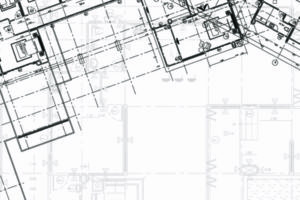Wayfinding Signage Designs: Keep Visitors Out of the Doldrums
We thought it would be interesting to take a look at wayfinding from the perspective of a sea-faring master navigator. The story of Nainoa Thompson, the first modern-day Polynesian to learn and use wayfinding for long-distance, open-ocean voyaging, can be found at pbs.org. Thompson is leading a revival of the art and science of wayfinding as it relates to seafaring expeditions.
For architects, designers and signage industry professionals, seafaring is completely different from wayfinding for architectural environments. Obviously, there are no signs with color-coded message schedules and directional arrows in the middle of the Pacific Ocean — although it might be fun to see a Photoshopped image of one…so we made one for you.
However, we feel something can be gained from taking perspective on some of Thompson’s challenges — specifically his experience of being at a loss for direction when he entered the doldrums. After you read the excerpt from his interview, think about what it is like for people visiting a hospital under less than ideal conditions. Can they find their way in bad weather? What about finding their way at night? How about at night with bad weather after they got a call that a dear friend or relative was admitted to the hospital? The rhetorical question is, are we as industry professionals doing enough with our wayfinding signage designs and messages to keep visitors to any facility out of the doldrums?
Q: What was it like when you really grasped wayfinding? Can you describe one of your more memorable experiences?
A: I just dreaded the doldrums, because I had no confidence that I could get through it. I was very — I forced myself, I limited myself to thinking that I could only really accurately navigate with visual celestial clues. And getting into the doldrums, where there’s 100% cloud cover all of a sudden — to me, I would be blind. And that’s what happened. We got in the doldrums, and it was just a mess. It was 100% cloud cover, the wind was switching around, it was about 25 knots, and we’re going fast, and that’s the worst thing you want to do — go anywhere and not know where you’re going. And I was just fighting it to search in this kind of black. It was nighttime, and it was black — the sky, everything was black — and I couldn’t find anything with my eyes. It was like I just got so exhausted that I just backed up against the rail and – and it, it was almost as if — and this, I don’t know if this is completely true, but there was something, a mechanism, that allowed me to understand where the direction was, without seeing it.
And it was almost like, when I just gave up fighting to try to find something with my eyes, I just settled down, and then all of a sudden, it was like this warmth came over me. It was just solid rain, and the guys steering the canoe, they were looking for direction. That put more pressure, because that was my first [voyage]. And all of a sudden, when sat back — I leaned against the rail — I felt this warmth come over me, and all of a sudden, I knew where the moon was. But you couldn’t see the moon, it was so black. And then I directed the canoe with all this total confidence at a time when I had already convinced myself prior to the voyage that I would have no confidence in knowing where to go. And I turned the canoe to this particular direction, got things lined up, felt very, very comfortable in this cold, wet, rough environment, and then there was a break in the clouds and the moon was there. And I don’t know how this — from a scientific, you know, trained that way, just doesn’t make — it’s unexplainable, but the experience existed.
To get the full story, you should click here to read about his journey.
For access to ASI’s wayfinding whitepaper, “Pathways to Success: The Benefits of Wayfinding Signage,” click here.
To read our InfoSeries, “Wayfinding: The Key to Creating Comfortable Environments,” click here.


